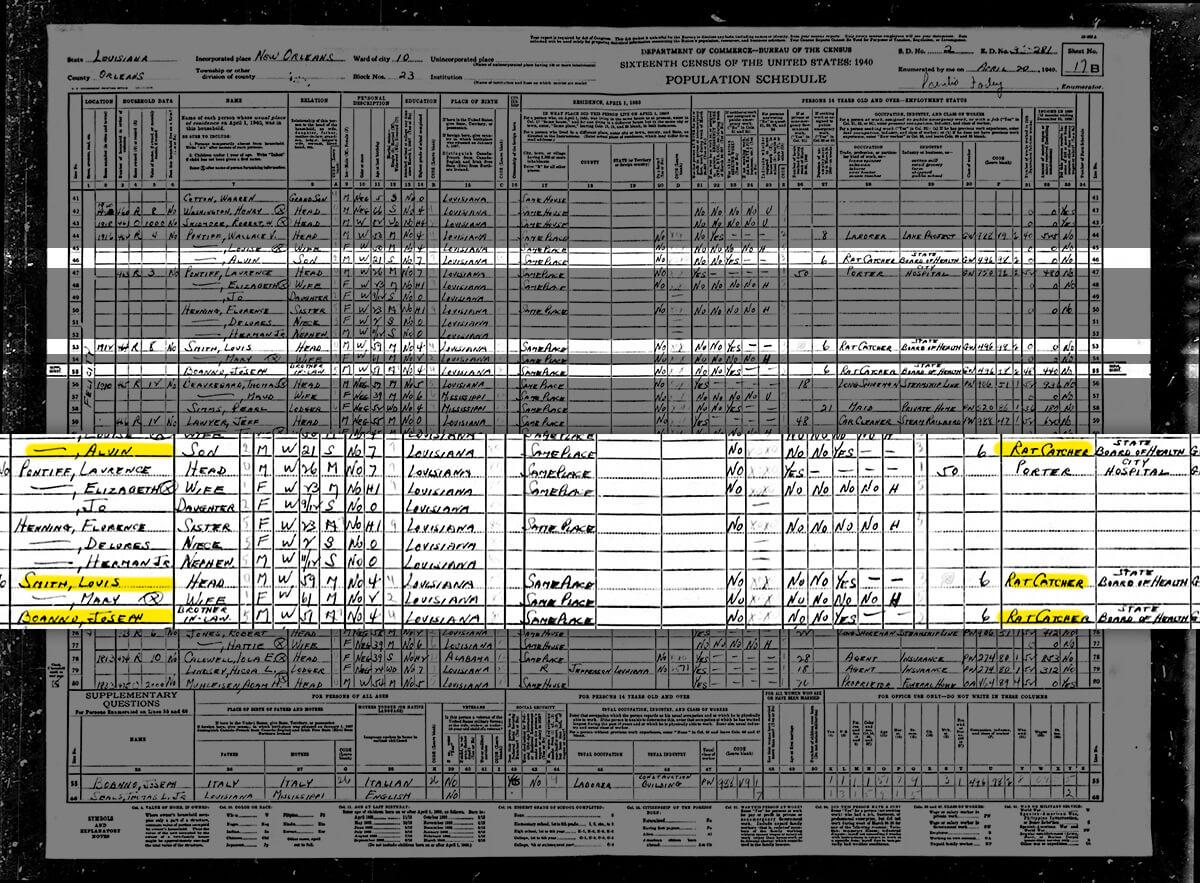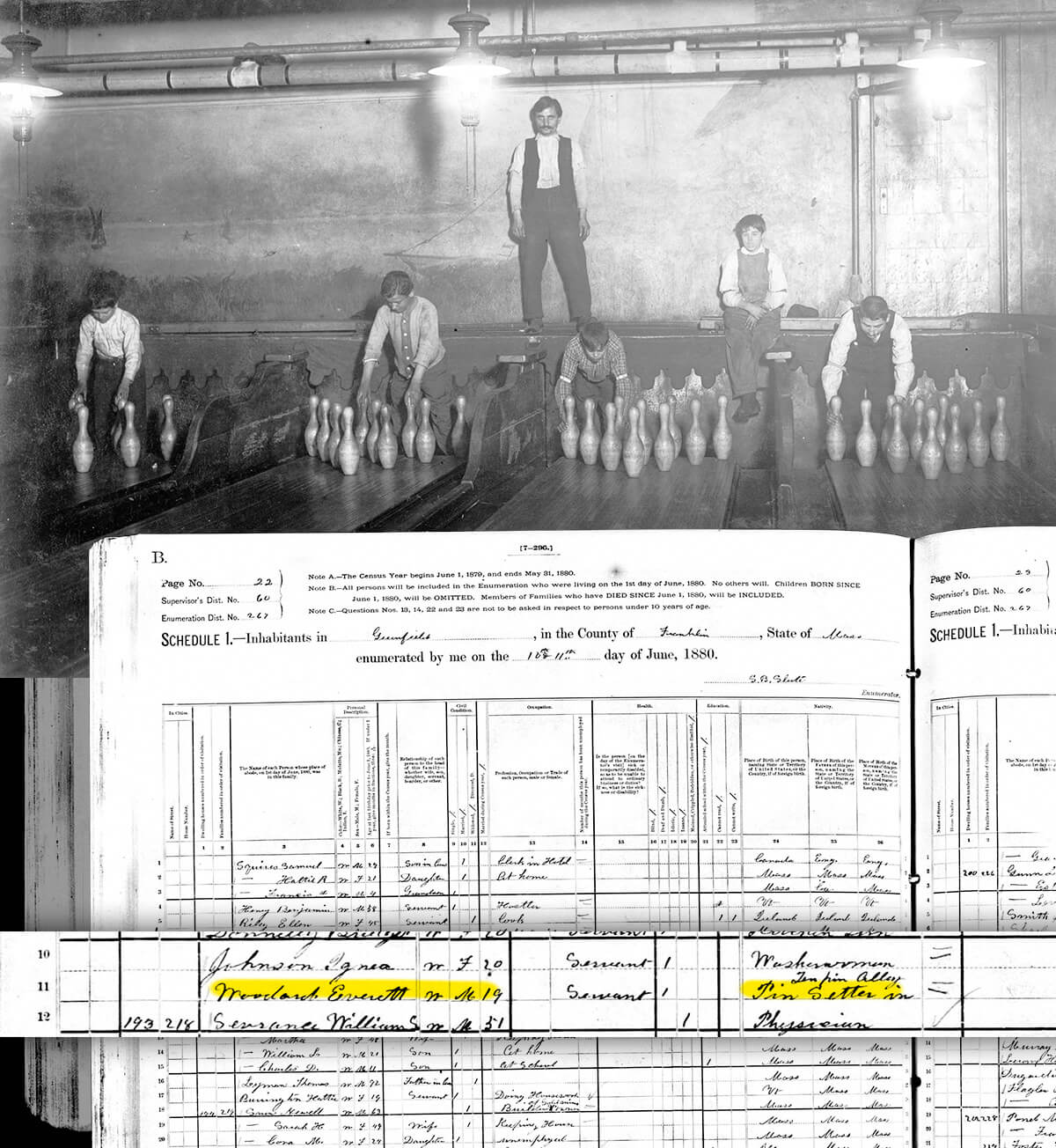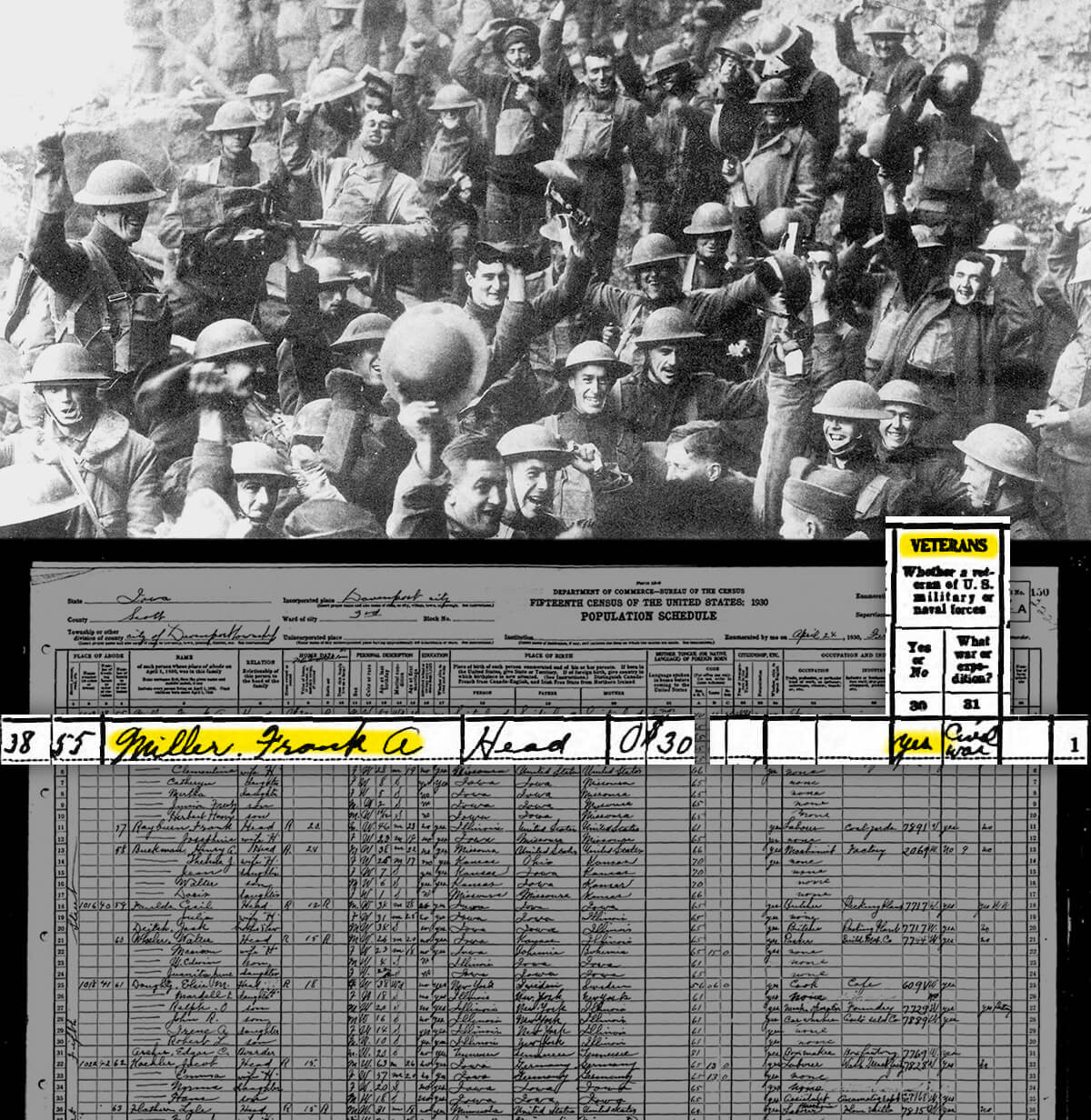Since 1790, population counters have gathered basic facts about the country’s population every ten years—from farms to boarding houses to mansions.
Today, decades of census records offer really rich details about the everyday life—and sometimes extraordinary life events—of generations of Americans.
In honor of the 2020 Census, and Census Day which was April first, here are seven very cool things that you can find in U.S. Census records.
A Pin Setter or a President
Could you have a rat catcher in the family? This census record shows a surprising number of them in 1940.

You can uncover an interesting variety of occupations in your family tree through census records—including many jobs that no longer exist, like an ice cutter in South Carolina or a pin setter like this one at Ten Pin Alley in Massachusetts.

As you scan records for your family, you might also spot other intriguing occupations. These include:
• clowns
• computers (the pencil-and-paper kind)
• cowboys (from Texas cowboys to Hawaii cowboys)
There’s even the occasional 19th-century witch.
And at 1600 Pennsylvania Avenue, there’s FDR as “president of USA.”

Technology People Used
Census records can give you a glimpse into some of the technology people used in past decades. For instance the 1930 Census asked whether people owned a radio.

The 1930s were part of the golden age of radio. According to the Census Bureau, about 12 million American households—about 40% of the country’s population—owned radios.
Occupations could also give you insights into technology at the time. For instance a record for a switchboard operator like this one in 1930 Missouri shows the telephone companies were still using switchboard operators there to connect callers.
Automatic or dial systems were developed in the the 1920s, but it would be decades before switchboards were phased out.
How Well Off Your Family Was
The census asked for different information from decade to decade, reflecting the concerns of the period. In 1940, as the country was emerging from the Depression, the census asked about income and employment.
While most Americans listed a few hundred dollars, Ronald Reagan was making a good living as an actor: He reported over $5,000 a year in income.

Thanks to Federal Census Non-Population Schedules, you can find granular details about how prosperous people were. You can see inventory owned by manufacturers and industrialists, the value of people’s land, and the number and types of livestock farmers owned and crops they grew.
In 1850, for instance, you can see how many pigs (or other livestock including “milch cows”) a farmer had, and compare it to others, to get a sense for how well off they might have been.

Civil War to World War Vets
The 1930 Census asked whether people had been a member of the military or navy, and what war or expedition they participated in. Back then, there were still veterans who had served in the Civil War.

But the more common war for veterans at that time was World War I. For instance this census record for an African American Chicago taxi cab driver and WWI vet reveals many fellow veterans, including a post office clerk, a railroad cook, and a construction worker.

What Someone’s Native Language Was
At the beginning of the 20th century, only a quarter of Americans were native English speakers. Starting in 1900, the Census thus asked what residents’ native language was.

According to the U.S. Census Bureau, German was the most common native language for foreign-born Census participants. Italian was the second-most common native language.
It was followed by Yiddish, as exemplified by this Polish-born New York City switchboard operator who listed Yiddish as the “language spoken in home before coming to the United States.”

How Old Someone Was When They First Got Married
The 1930 Census got a little personal, asking respondents how old they were when they first got married.

On the heels of the roaring 20s, with its flapper culture and expanded opportunities for women, some social commentators thought women were probably marrying later.
That turned out not to be true, likely because more social events and school gave young people more chances to meet, but it got the question on the Census.
In 1930, the median age for women to marry was 21. For men, it was 24. Today, it’s close to 28 and 30.
Changes of Fortune
A lot can happen in the 10 years between censuses. And the differences you find from one census year to the next can take you beyond the snapshot of a single census year to an even richer story.
You might find stories of resilience, of overcoming hardships. For instance if your family appeared in the 1860 Census, their life situation could have looked very different in the 1870 Census, after the hardships of the Civil War.
But you might also find success stories: the first person in your family to attain a certain level of education (which you can see in the free-to-search 1940 census), an intrepid adventurer, or an entrepreneur.
One famous example: Walt Disney. In this 1920 Census record of an 18-year-old Walt Disney he’s listed as a “artist cartoonist,” living in Missouri with his older brothers Herbert, a postal carrier, and Roy a bookkeeper—along with Herbert’s wife and daughter.

Ten years later, in the 1930 Census, Walt is living in Los Angeles with his wife Lillian. And he’s listed as a “producer” in the “motion picture” industry.
By the 1940 Census, Walt is still in LA, listed as a “motion picture producer.” But now he’s got two children and a home listed at five times the value of his 1930 home.
Disney may be one of the most better-known success stories, but the U.S. Census record collection is filled with stories of trials and triumphs, of individuals and families striving for a better tomorrow.
What Will You Discover?
Almost 9 out of 10 Americans have a relative in the 1940 Census, so many people are able to uncover rich details about their past.
What are you waiting for? Start searching the U.S. Federal Census collection today.
